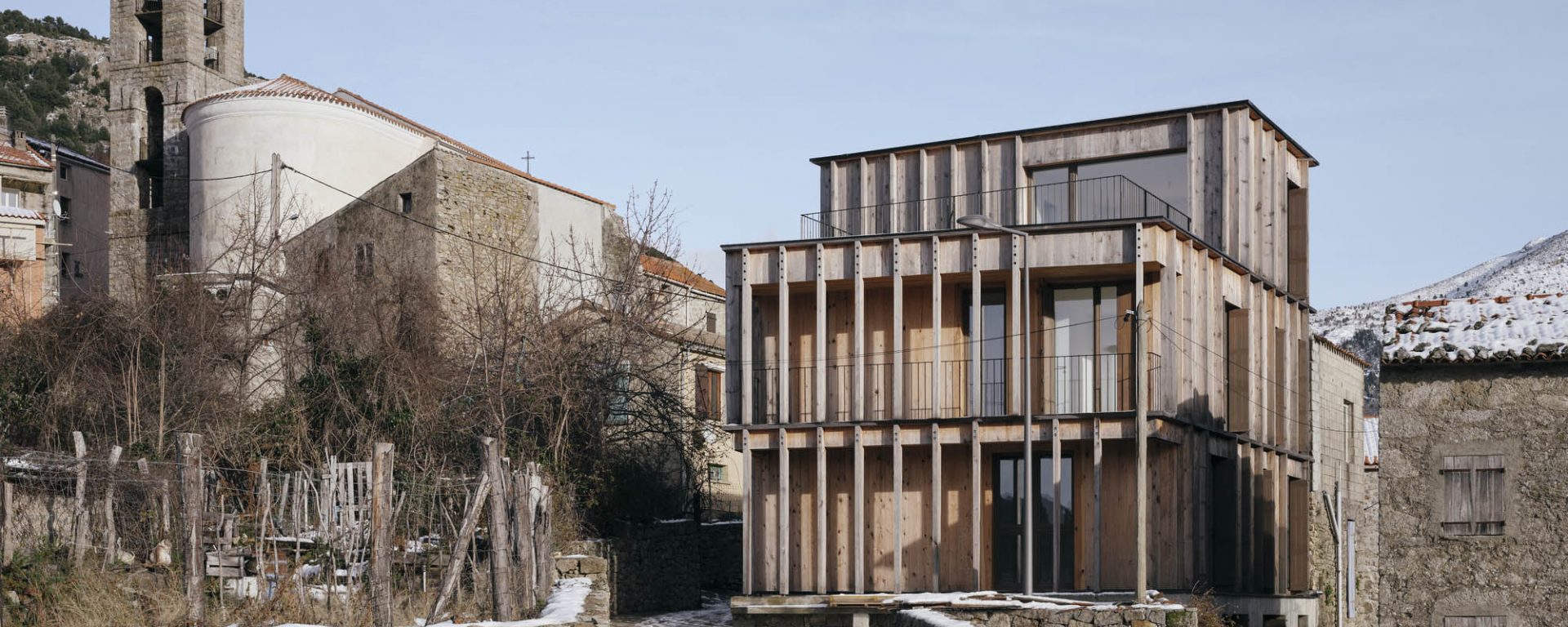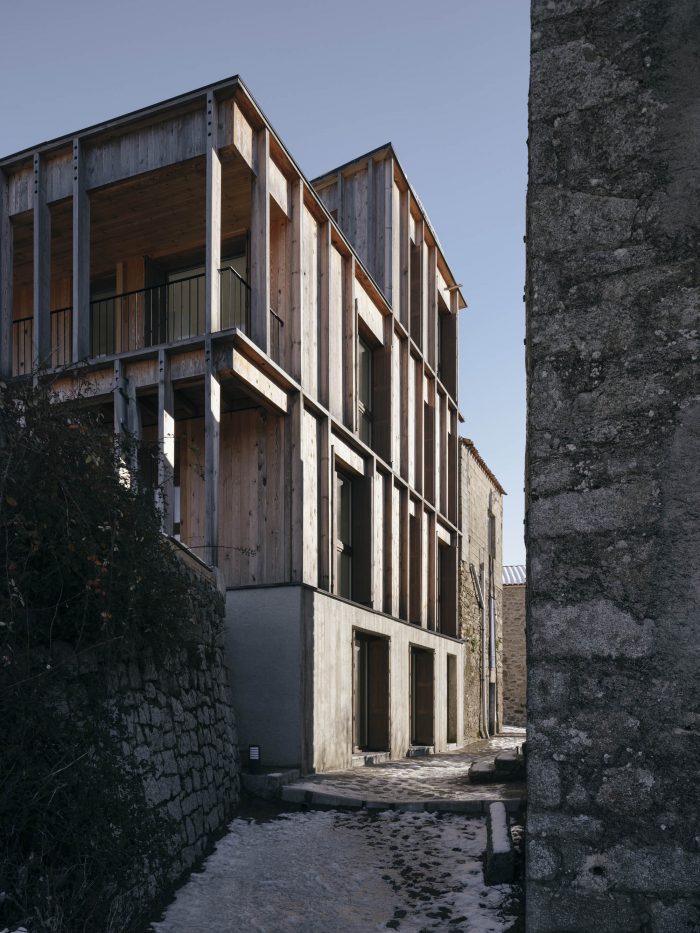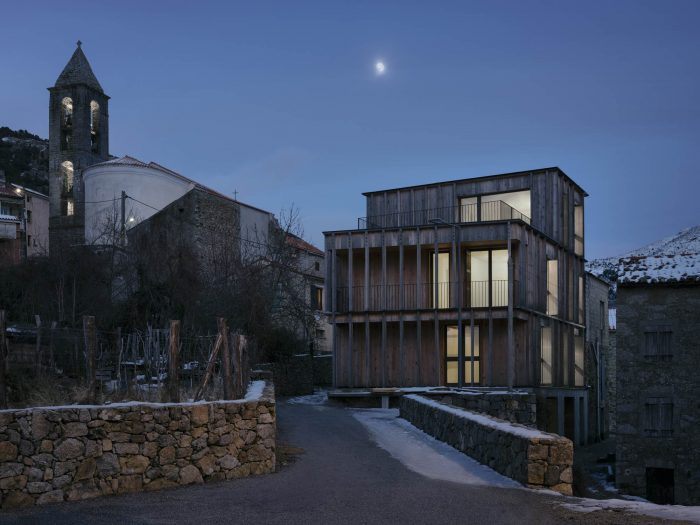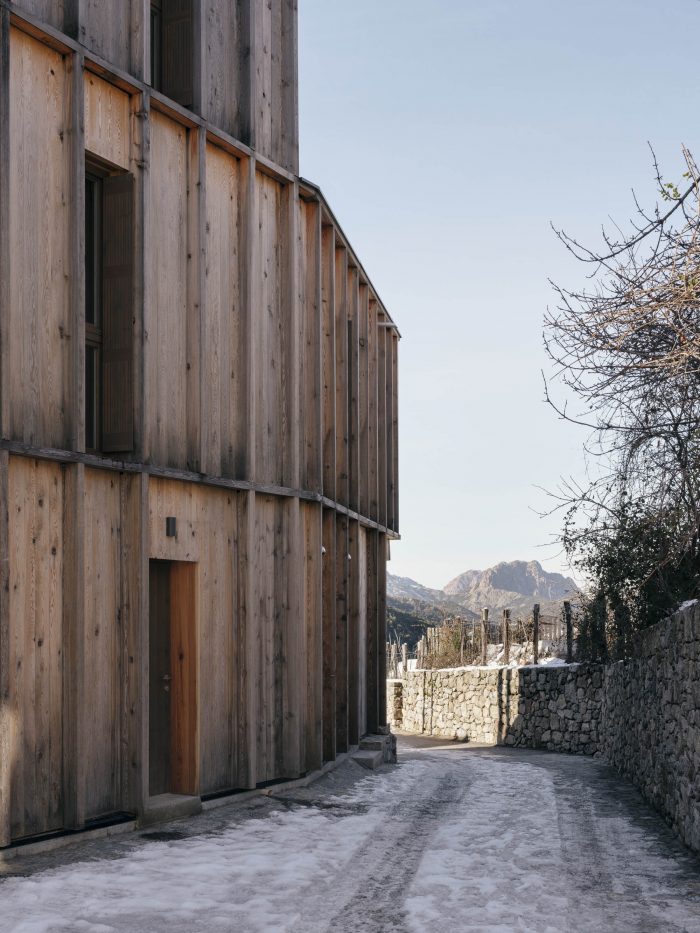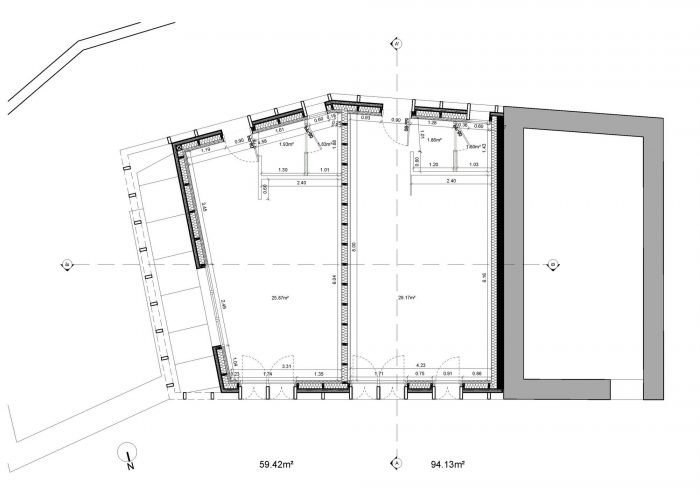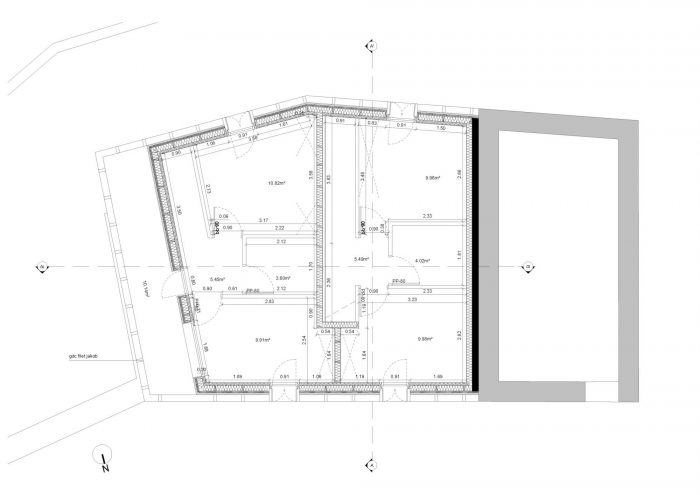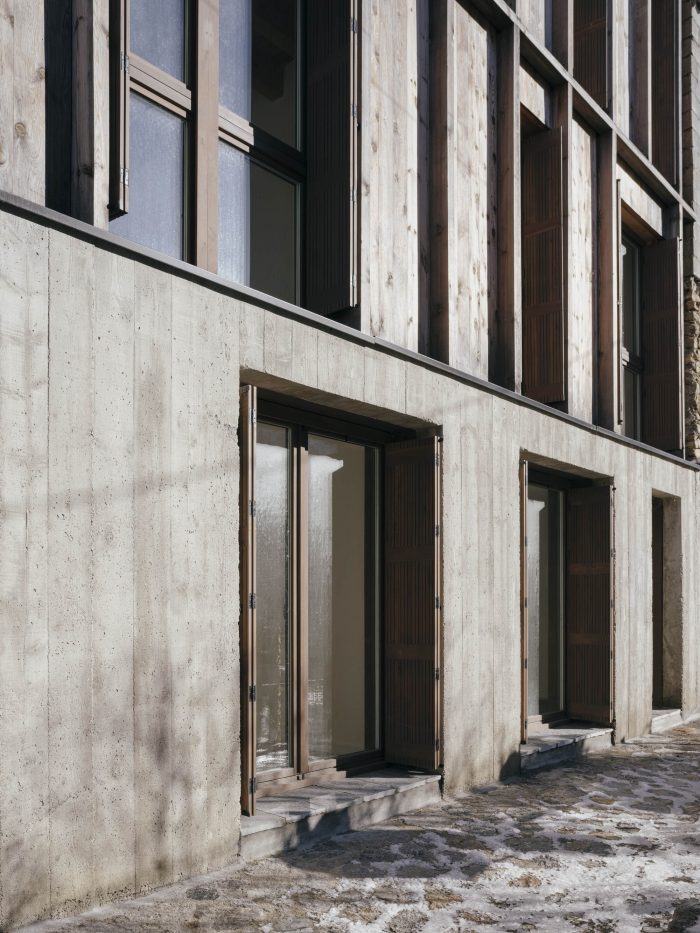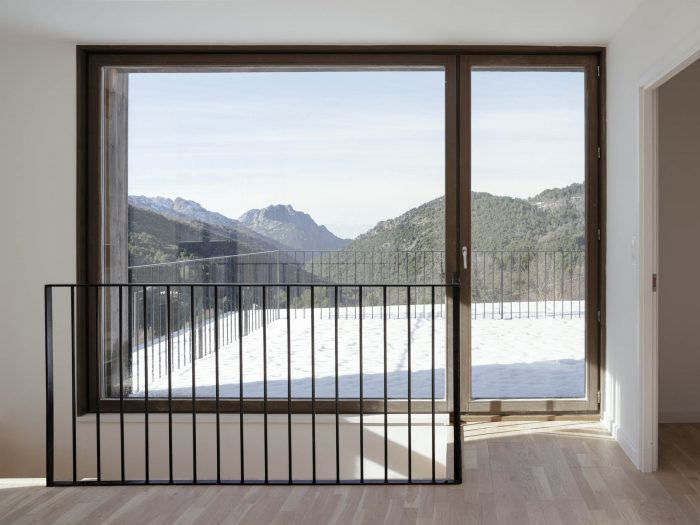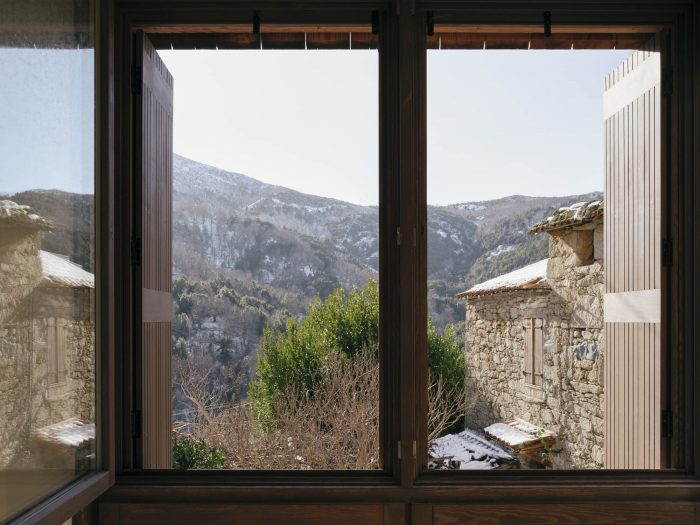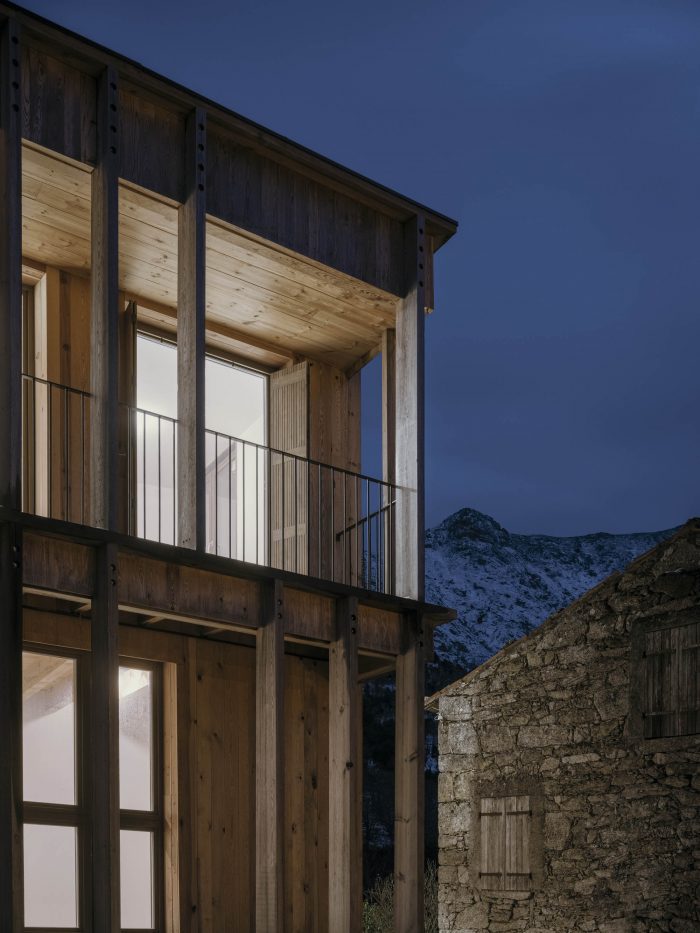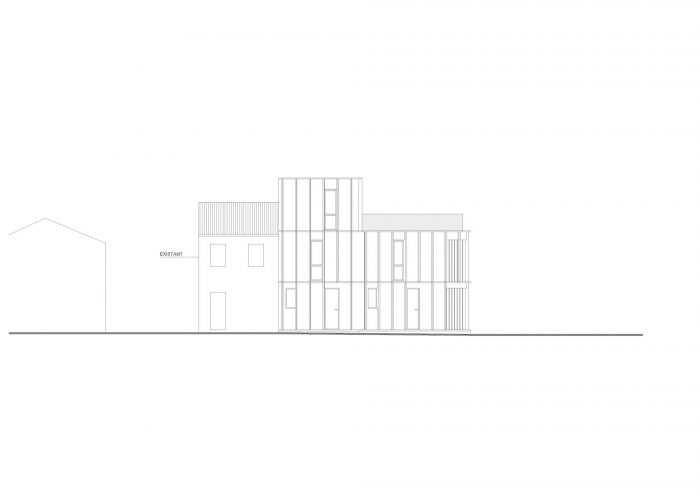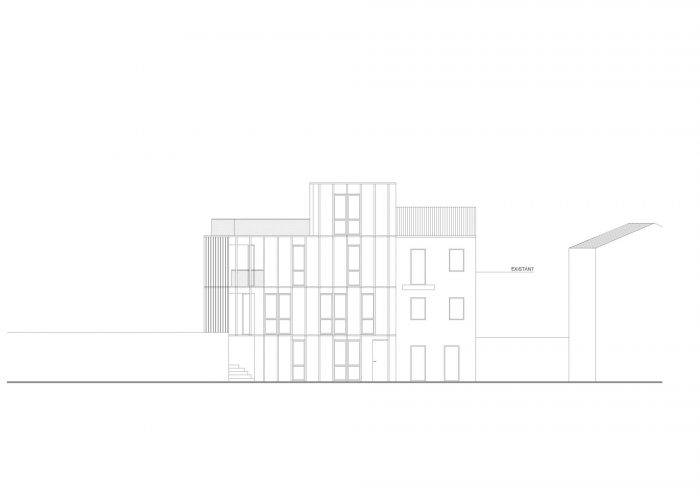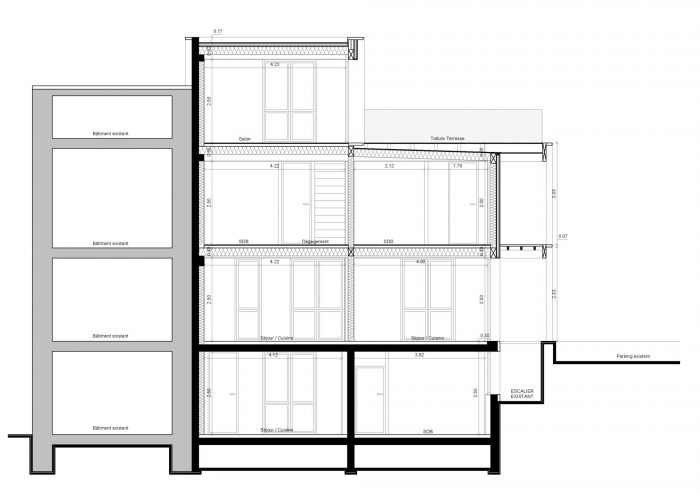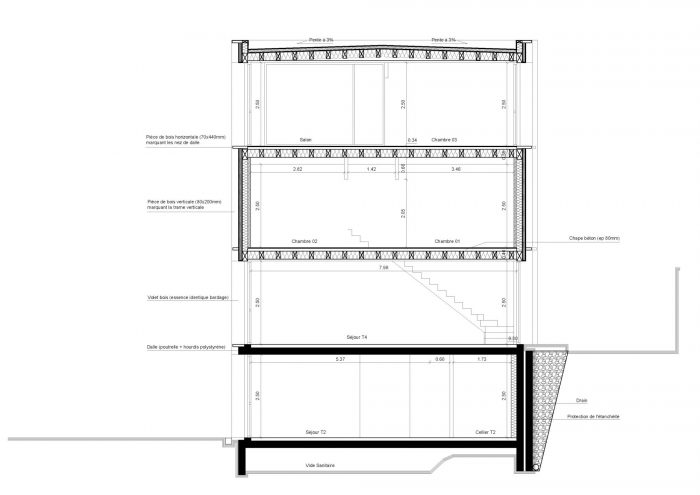目前的项目是对科西嘉岛Cristinacce小村庄的一个废墟进行重建和重组,以创建三个市属公寓。该项目遵循三个轴心。
The project at hand is the rebuilding and reorganisation of a ruin in the small village of Cristinacce, Corsica, to create three city-owned apartments. The project follows three axes:
首先,它有一个社会方面,因为它不仅是城市所有,而且类型不同,以应对科西嘉村庄的多样性情况。 其次,你会发现一个环境的角度,因为它是整个岛屿现在的一个紧迫问题。这座建筑被调成 “低碳”,这使它成为科西嘉岛上的第一个此类建筑。 最后,项目的建筑方面,当然是以现代建筑的形式出现,符合现代生活的需要,但在古老的传统结构中,在我们的小村庄里永远存在。
Firstly, there is a social aspect to it as not only it is city-owned, but the typologies are different to respond to the diversity of situations within Corsican villages. Secondly, you find an environmental angle as it is a now pressing matter for the whole island. This building is dimmed “low-carbon”, which makes it the first of its kind in Corsica. Finally, the architectural aspect of the project, of course, lies in the form of a contemporary construction that fits the needs of modern life but in the midst of old, traditional fabric, ever-present in our small villages.
在一个小村庄建造三个社会住宅的做法是一种抵抗行为,因为它的目的也是与内陆的人口减少作斗争。为收入较低的人口提供高质量的住宅甚至更多。
There is an act of resistance to the approach of building three social dwellings in a small village as it aims also at fighting against the depopulation inland. Offering high-quality dwellings for lower a population with a lower income is even greater.
这个项目的特点是结构和表面主要是木制的,从而真正使建筑处于我们的时代。还有一个目的是进一步整合现代的体积和形状,考虑到材料的统一性和外墙的简洁性。此外,该建筑的结构允许我们创造宽阔的开口,这对于满足环境标准以及框住远处的山景是必要的。
The project is characterised by a structure and a surface mainly wooden-made, thus really setting the building in our times. There was also the purpose of further integrating the modern volumes and shape, considering the material unity and sobriety of the façades. Furthermore, the architecture of the building allows us to create wide openings, necessary to meet the environmental standards as well as framing the views on the mountains afar.
在科西嘉岛宣传木材渠道、工业的优点已经没有必要,因为这种材料不仅在全岛范围内大量存在,而且是一种最高质量的木材。然而,我们仍然想倡导当地的手工艺,并指出这样一个事实:尽管木材很多,但由于科西嘉岛缺乏干燥设备,使用这样一种简单的材料进行建筑仍会出现困难。事实上,大部分正在使用的木材必须在大陆或意大利进行干燥和加工。
Advocating the merits of a wood channel, industry, in Corsica could no longer be necessary as it is a material that you don’t only find in abundance across the island, but it also is a wood of the highest quality. Nevertheless, we still wanted to champion the local craftsmanship and point out the fact that despite wood being in plenty, difficulties in building with such a simple material can still arise because of the lack of drying units in Corsica. Indeed, the majority of the wood being used has to be dried and transformed, either on the mainland or in Italy.
该项目正在研究为眼前的问题提供直接的答案。为了做到这一点,我们所研究的建筑方法必须是精确的,并且要结合这样一个事实,即我们将使用的木材不会达到所要求的13%的湿度,这在所有传统的木结构中通常是这样的。这样做,我们避免了在大陆运输木材,同时也降低了项目的碳足迹。
The project is looking into providing immediate answers to the issues at hand. In order to do this, the building methods we have looked into had to be precise and to integrate the fact that the wood we would use would not reach the required 13% humidity rate, as is normally the case in all traditional wooden structures. Doing so, we avoided shipping the wood on the mainland, lowering the carbon footprint of the project at the same time.
因此,在对整个过程要求很高的情况下,我们希望确保该项目在所有方面都能成为典范。这个项目在社会和环境方面都很好,促进了地方性资源(Laricio松树使用的木材),并参与了科西嘉岛内陆地区的再开发。
Hence, in being very demanding with regard to the whole process, we wanted to ensure that the project would be exemplary in all aspects. This project is socially and environmentally sound, promoting endemic resources (the wood used in Laricio pine tree) and participate to repopulate the inland parts of Corsica.
Architects: Orma Architettura
Area: 280 m²
Year: 2017
Photographs: Julien Kerdraon
Country: France

